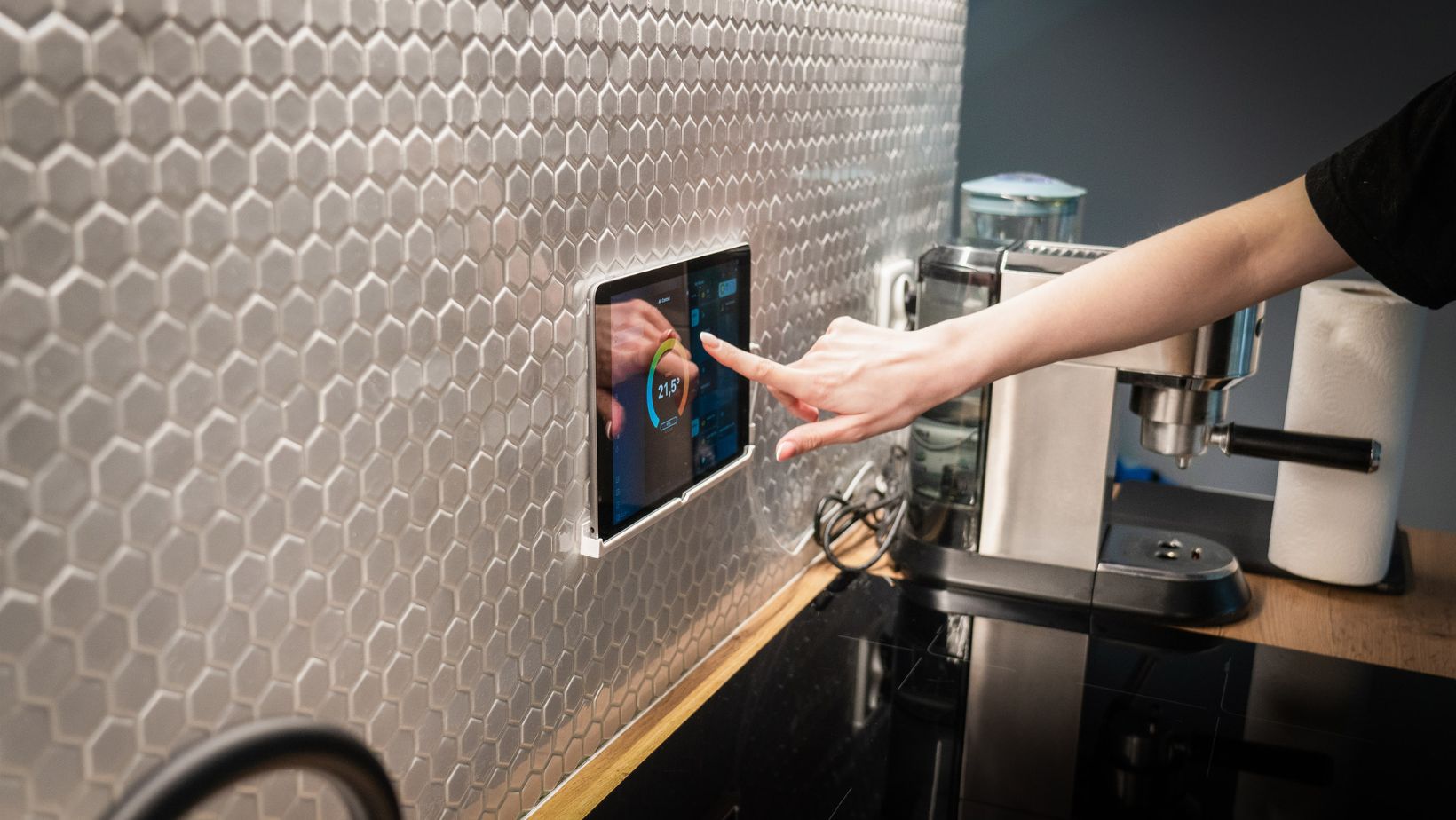Interior design transforms spaces into reflections of personality and lifestyle. It’s not just about aesthetics; it’s about creating environments that enhance well-being and functionality. From selecting the perfect color palette to arranging furniture for optimal flow, every detail matters in crafting a harmonious atmosphere.
Understanding the essence of interior design involves exploring various styles, materials, and techniques. Whether someone leans toward minimalist elegance or vibrant eclecticism, each choice shapes the overall experience of a space. This article delves into the key elements of interior design, offering insights that inspire creativity and inform decisions for any project.
Key Takeaways
- Importance of Interior Design: Interior design enhances personal spaces, balancing aesthetics with functionality to improve well-being and comfort.
- Key Components: Essential aspects include space planning, color theory, lighting design, material selection, and texture that collectively shape the atmosphere of a space.
- Collaboration: Interior designers work closely with clients to understand their lifestyle and preferences, ensuring designs meet both functional and aesthetic needs.
- Current Trends: Noteworthy trends in interior design include sustainable practices, biophilic elements, minimalism, smart home technology, and a resurgence of bold patterns and colors.
- Diverse Styles: The field showcases a variety of styles such as traditional, modern, and maximalist, each offering distinct characteristics to cater to individual tastes.
- Focus on Wellness: Modern interior design increasingly prioritizes wellness-centric elements, such as natural light and relaxation spaces, to promote a healthier lifestyle.
Interior Design Description
 Interior design involves the art and science of enhancing the interior of a space. It prioritizes creating functional and aesthetically pleasing environments tailored to individual needs. Designers focus on optimizing spatial layouts, selecting color schemes, and applying various materials to achieve desired effects.
Interior design involves the art and science of enhancing the interior of a space. It prioritizes creating functional and aesthetically pleasing environments tailored to individual needs. Designers focus on optimizing spatial layouts, selecting color schemes, and applying various materials to achieve desired effects.
Key components of interior design include:
- Space Planning: Arranging furniture and décor efficiently to improve usability and flow.
- Color Theory: Understanding how colors influence mood and perception, helping to create the desired atmosphere.
- Lighting Design: Utilizing natural and artificial light to highlight features and enhance ambiance.
- Material Selection: Choosing appropriate finishes and furnishings that align with design intent and durability requirements.
- Texture and Pattern: Incorporating various textures and patterns to add depth and interest.
Interior designers must consider client preferences and lifestyle needs while adhering to functional guidelines. They often collaborate with architects and contractors to ensure cohesive project execution. The end goal is to create spaces that not only look good but also promote well-being and comfort.
Key Elements Of Interior Design
Interior design relies on several core elements that collectively enhance the function and appearance of a space. Understanding these elements aids in creating environments that align with individual lifestyles and preferences.
Space Planning
 Space planning serves as the foundation of interior design. It involves analyzing how people interact within a space and organizing that space to facilitate movement and functionality. Effective space planning includes:
Space planning serves as the foundation of interior design. It involves analyzing how people interact within a space and organizing that space to facilitate movement and functionality. Effective space planning includes:
- Zoning: Dividing areas into specific functions, such as living, dining, and work zones, optimizes usability.
- Flow: Ensuring seamless transitions between areas improves navigation and comfort.
- Proportions: Balancing the scale of furniture and design elements enhances harmony.
Adhering to these principles supports the creation of spaces that feel both open and inviting.
Color Theory
Color theory plays a vital role in influencing mood and perception within a space. It encompasses the psychological effects of colors and their interactions. Key considerations in color theory include:
- Color Wheel: Utilizing complementary and analogous colors creates visual interest and cohesion.
- Warm vs. Cool Colors: Warm colors foster energy, while cool colors promote calmness, influencing overall ambiance.
- Color Psychology: Understanding how colors affect emotions helps achieve the desired atmosphere for each room.
Applying color theory strategically transforms the aesthetic and functional quality of interior spaces.
Furniture Selection
Furniture selection significantly impacts the functionality and style of an interior. Thoughtful choices enhance comfort and usability. Important factors in furniture selection are:
- Size and Scale: Selecting appropriately sized furniture ensures a comfortable fit in the space.
- Style: Choosing furniture that complements the overall design theme maintains visual coherence.
- Functionality: Prioritizing multi-functional pieces maximizes utility, especially in smaller spaces.
Mindful furniture selection creates a harmonious balance between aesthetics and practicality, ultimately enhancing the overall interior experience.
Styles Of Interior Design
Interior design encompasses various styles that reflect personal tastes and functional needs. Each style showcases unique characteristics, allowing for diverse interpretations and applications in various spaces.
Traditional
Traditional interior design emphasizes classic aesthetics, rich colors, and luxurious materials. Typically, this style features ornate furniture styles and decorative elements that echo historical influences. Key characteristics include:
- Symmetry: Balanced layouts with matched pairs of furniture.
- Rich Textiles: Use of fabrics like velvet, silk, and brocade for elegance.
- Classic Colors: Warm tones, such as deep reds, greens, and gold accents.
- Antique Accessories: Decorative items and artwork that convey a sense of history.
Modern
Modern interior design focuses on minimalism and clean lines, promoting simplicity and functionality. This style often incorporates innovative materials and technology. Key characteristics include:
- Neutral Palette: Use of whites, grays, and blacks to create a serene atmosphere.
- Open Spaces: Emphasis on spacious layouts without clutter.
- Minimal Decor: A focus on removing unnecessary items, creating a streamlined look.
- Functional Furniture: Pieces that serve dual purposes, enhancing usability.
- Bold Colors: Bright, contrasting hues that add vibrancy.
- Varied Textures: A mix of materials, incorporating wood, metal, and fabric.
- Unique Furnishings: Selection of furniture from different periods or cultures.
- Artistic Displays: Use of artwork and accessories to create visual interest and personality.
The Role Of Interior Designers
Interior designers play a vital role in shaping the environment, combining aesthetics with functionality. They collaborate closely with clients to ensure that spaces meet both visual appeal and practical needs.
Collaboration With Clients
Collaboration with clients serves as a cornerstone of the interior design process. Designers engage in active discussions to understand client preferences, lifestyles, and specific requirements. They conduct needs assessments, which inform decisions about space allocation, color schemes, and furnishings. Through sketches and mood boards, designers visualize concepts, fostering clear communication. Regular feedback sessions ensure alignment throughout the project, guaranteeing that the final design resonates with the client’s vision.
Project Management
Project management entails overseeing various aspects of the design process to ensure timely and efficient execution. Designers establish project timelines, coordinate with vendors, and manage budgets to avoid overruns. They supervise contractors and tradespeople, ensuring adherence to design specifications and quality standards. Effective project management streamlines workflows, minimizing disruptions and maximizing productivity. By maintaining an organized approach, interior designers deliver cohesive and polished outcomes that meet client expectations.
Current Trends In Interior Design
Interior design continually evolves to reflect societal changes, lifestyle preferences, and technological advancements. Key trends currently shaping the industry include:
- Sustainable Design
Sustainable design focuses on eco-friendly materials, energy-efficient appliances, and sustainable practices. Designers opt for reclaimed wood, natural textiles, and low-VOC paints to minimize environmental impact. - Biophilic Design
Biophilic design emphasizes a connection between indoor spaces and nature. Incorporating plants, natural light, and organic materials enhances well-being and creates serene environments. Designers often use large windows and indoor gardens to blur the lines between indoors and outdoors. - Minimalism
Minimalism maintains its popularity with clean lines, neutral colors, and a decluttered aesthetic. This approach prioritizes functionality, encouraging the use of multi-purpose furniture and open spaces that promote a sense of calm. - Smart Home Integration
Smart home technology transforms interior spaces, allowing for seamless control of lighting, temperature, and security. Designers integrate smart systems into existing designs, creating user-friendly environments. - Bold Colors and Patterns
While neutral palettes remain popular, bold colors and patterns are making a resurgence. Designers are incorporating vibrant hues, geometric patterns, and textured materials to create striking focal points within spaces. - Maximalism
Maximalism embraces eclectic styles, varied textures, and abundant accessories. This trend allows for personal expression, permitting homeowners to showcase collections and infuse lively elements into their environments. - Vintage and Retro Influences
Vintage styles continue to influence modern design, with mid-century modern furniture and retro color schemes returning to favor. This blend of old and new creates unique, personalized spaces. - Wellness-Centric Spaces
The focus on wellness in interior design highlights elements such as improved air quality, natural lighting, and dedicated spaces for relaxation like meditation areas or home gyms. Designers prioritize layouts that enhance comfort and promote healthy lifestyles.
These trends reflect a blend of aesthetics, innovation, and sustainability, influencing how spaces are designed and experienced.
Style and Functionality
Interior design plays a crucial role in shaping environments that reflect personal style while enhancing functionality and well-being. By understanding the interplay of colors, materials, and layouts, designers create spaces that are not only visually appealing but also practical for everyday living.
As trends evolve, the focus on sustainability and technology continues to redefine how spaces are conceived and experienced. The collaboration between designers and clients ensures that each project is tailored to individual needs, resulting in harmonious and inviting environments.
Ultimately, the art and science of interior design remain essential in crafting spaces that inspire and promote comfort in modern life.

